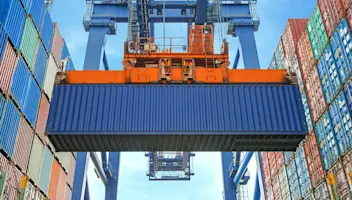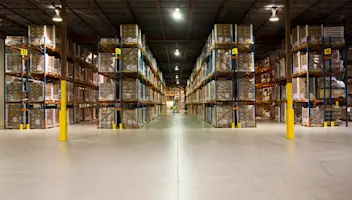3 Ways a Distribution ERP Transforms Supplier Inbound Tracking
3 Ways a Distribution ERP Transforms Supplier Inbound Tracking
3 Ways a Distribution ERP Transforms Supplier Inbound Tracking
9 Nov 2021
Ken Weygand
The pandemic and global trade issues have transformed the supply chain forever. As a distributor, you can’t afford to reduce inventory, especially at the expense of keeping your retail customers happy. Visibility of the inbound goods you’ve purchased is more crucial than ever right now, as analysts predict disruptions to the supply chain won’t be lessened anytime soon.
If you haven’t bought an ERP yet for your distribution business, or you’re using an outdated, legacy system, now is the time to modernize. You need to be able to track your orders with to-the-minute precision, and if exceptions arise, you need to know as they happen. You need complete visibility into where your inbound containers of goods are.
An ERP built for distributors, with real-time tracking will help you mitigate supply chain issues, now and in the future.
Here are three functions that can help.
Real-Time Container Tracking Visibility
To get the greatest profit margins on your products, you need to be able to track your inbound containers, which means that you need the right technology. A generic ERP will not have the specific capabilities you need. For example, a generic system may use the virtual warehouse system to track inbound goods that are in transit. Since a virtual warehouse doesn’t have any details on the shipping containers, the specific product counts in the container and expected arrival dates, you won’t get the level of detail needed to track inventory from end-to-end.
What your distribution company does need is the capability to discern what products are being shipped, in what quantities, what container they are on, and an ETA. With a distribution ERP you’ll see, down to the smallest detail, when the products that fulfill your customer’s orders will arrive, and you can give those customers accurate delivery deadlines. You’ll track your inbound shipping containers from the second they get loaded onto the ship until they are delivered; or at least until your customer takes control over the shipment.
As you know, you cannot rely on your manufacturer’s reporting capabilities, which can be confusing at best and misleading at worst. With inbound tracking, you know in real time if a shipment may be delayed or delivered with damages or shortages. That way, you can inform your customers as the delays occur and skillfully manage customer expectations.
You also want to outline your terms and conditions under which your vendors must operate. An ERP with built-in distribution functionality facilitates logistics procedures and routing rules, which gives you control. The system provides end-to-end shipment visibility, which in turn supports better customer satisfaction.
Better Freight Costs Management
Do you know exactly what your true landed costs are? Better yet, do you know what your profit margins are on all your customers? An industry-specific distribution ERP does.
By automatically adding in container fees, broker fees, customs charges and other costs, you can assess landed costs by any factor you choose, such as volume or weight. Once you know how your suppliers measure up, you’ll have the data you need to identify problems—and opportunities—in the supply chain. This can help increase profits across the board.
But wait—there’s more. Our industry-specific distribution ERP comes with a built-in profitability scorecard. This module gives you an in-depth analysis of your real margins after calculating all your below-the-line costs. It drills down into each segment, and examines all cost details, like damage write-offs, chargebacks, duties, royalties and commissions. You have the hard data you need to make better business decisions.
Predictive and Forecasting Capabilities
You need to stay one step ahead of your competitors, and predictive analytics and forecasting will help you do it. You’ve spent years building up good relationships with your suppliers. Talk to them and see what, if any, shortages they anticipate. Knowing KPIs like supplier delivery performance is imperative for you so you can pivot and find another supplier if necessary. You need to know customer demand forecasts, number of items scheduled for production, and other key details.
Supplier delivery times are at an all-time high, so you need to manage these KPIs to help alleviate the impact. Predictive analytics will tell you when to increase stock-levels and help you optimize replenishment strategies.
You need to keep the correct inventory levels to meet both current and anticipated demand. Aptean Distribution ERP with demand planning helps you meet customer demand, minimize excess inventory and avoid supply chain disruptions. Demand planning and forecasting tools integrate both historical sales data and sales forecasts so you optimize purchasing decisions. Our distribution ERP has integrated your sales, purchasing, and supply functions, so you get precise forecasting. Your team can pivot on a dime as circumstances dictate—improving overall inventory management and customer service levels.
Putting It All Together
The current supply chain limitations are frustrating. Inventory shortages, labor shortages, and shutdowns due to the pandemic have added to the supply chain chaos. While you cannot change external factors, you can change how quickly your company reacts to them.
If you can reliably track containers in real time with an industry-specific ERP, you will have the data you need to make smart decisions. Sure, you may still have to let your customers know that their order is running late, but you can discuss options with them before further issues occur. For instance, maybe you need to increase manufacturing capacities in specific locations. You could try diversifying suppliers; and, if necessary, adjust your prices accordingly.
A purpose-built ERP for importers and distributors gives you the tools you need to track inbound shipments in real time. You can then translate that data into accurate order management, forecasting, and inventory planning.
Running a distribution company can be challenging, particularly when outside factors threaten to undermine customer relationships and profitability. Using a distribution ERP gives you the opportunity to save both time and money. That’s why companies need to have full control over their inbound containers and find more efficient, cost-effective ways to manage orders. An ERP with import management optimizes supply chain management and helps you provide an exceptional customer experience.
Aptean Distribution ERP includes an Import Management module, which tracks shipments, vessels and containers to provide visibility of inbound inventory and order fulfillment. Ready to learn more? Find out how, now.
Related Articles


Ready to start transforming your business?
We’ve got the specialised ERP solutions you need to conquer your industry challenges.






